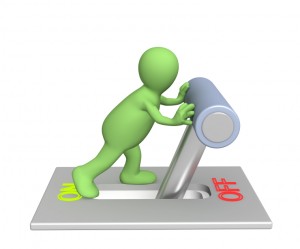 Think of anxiety as a physical process originally intended for protection against real danger. But it has a tendency to overreact.
Think of anxiety as a physical process originally intended for protection against real danger. But it has a tendency to overreact.
Example: Say you’re worried about a problem or uncertainty in your future. Somehow, your brain has interpreted this as a present threat and released anxiety chemicals into your system. Chemicals that you don’t really need, because the danger isn’t imminent.
So the problem becomes: How to turn off the anxiety switch?
We’ll use two tools: breathing and visualization.
First, think of a place where you feel quite safe and relaxed. It could be a favorite vacation spot or room in your home, or it could be wholly imaginary, just something you made up. Maybe it’s a beach on a warm, calm day. The important thing: it feels relaxed and safe to you.
Next step: Sit in a chair with both feet flat on the floor (remove your shoes if you like), with hands palm down on your thighs. Allow your eyes to close.
Begin deep breathing as follows:
- Inhale to a count of three, letting your abdomen expand as you take in the air.
- Then exhale, this time to a count of 9. Make the count measured– not too fast, not too slow.
- Be sure to push the air out during the exhale. This make take a little practice, but it’s not difficult.
- Inhale and exhale in this fashion perhaps ten times– counting 3 in, 9 out, pushing the air from your abdomen.
After eight to ten breaths, relax your breathing and allow your mind to drift to that pleasant place you identified earlier. Allow yourself to spend a few minutes just being there, noticing how relaxed it makes you feel, how calming it is. Let the feeling of calm expand in your mind.
When you’re ready, allow your eyes to open. You notice you feel refreshed. No longer particularly anxious. The whole process took five minutes or so.
And the best part is, you can visit your “calm place” whenever you want.









